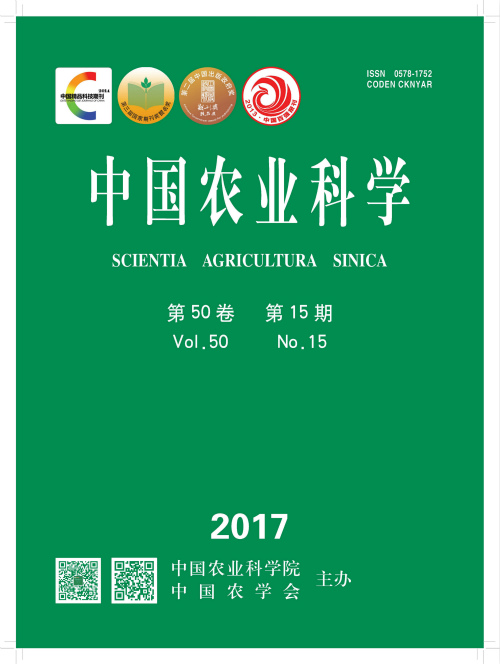【Objective】For the problem of less rainfall and uneven distribution, lower water and nitrogen use efficiency of dryland wheat in the Loess Plateau, the best technological way for water conservation through mulching and nitrogen fertilization of dryland wheat was studied.【Method】Field experiments were carried out in Qiujialing village, Wenxi, Shanxi from 2010 to 2013, the main plot was mulched with plastic film or no mulched after deep tillage during the fallow period, the subplot was applied with nitrogen fertilizer at 75 kg·hm-2, 150 kg·hm-2, and 225 kg·hm-2 in order to make clear the effect of mulching during the fallow period and nitrogen fertilization on soil moisture, plant nitrogen utilization and its contribution to yield of dryland wheat in different years. 【Result】The results showed that the soil moisture, plant nitrogen accumulation, the N translation amount before anthesis and its contribution proportion to grain at every growth period were the highest in humid year and the lowest in dry year. Compared with the dry year, the yield of grain in humid and normal year, respectively, increased by 80% and 69%, the water use efficiency, respectively, increased by 7% and 20%, the N use efficiency, respectively, increased by 6% and 5%. Compared with no mulching during the fallow period, the soil water storage in 0-300 cm depth was significantly increased by 52-60 mm at sowing stage under the condition of mulching, and the soil water storage was significantly increased before anthesis, plant nitrogen accumulation was increased in every growth period, the N accumulation of grain was significantly increased. Compared with no mulching during the fallow period, the N accumulation was significantly increased after jointing stage under the condition of mulching in humid and normal years, the contribution rate to grain of the N translation amount of leaf and spike before anthesis was increased; the N accumulation and its proportion at different growing stages were increased in dry year, the contribution rate to grain of the N translation amount of stem and sheath before anthesis was significantly increased. Compared with no mulching during the fallow period, the grain yield was significantly increased by 23%-41%; water use efficiency increased by 3%-15%, the N use efficiency was significantly increased in humid and normal years by 14%-26% and significantly increased by 10% under the condition of low N fertilization in dry year. Combined with high N fertilization in humid year, combined with middle N fertilization in normal year and dry year under the condition of mulching during the fallow period, combined with low N fertilization in dry year under the condition of no mulching during the fallow period, the soil water storage, yield and water use efficiency were the highest before booting stage. Combined with high N fertilization in humid year, the translation amount of N before anthesis and the N accumulation after anthesis were significantly the highest, especially promoted the translation from leaf and spike to grain before anthesis. Combined with middle N fertilization in normal year and dry year under the condition of mulching during the fallow period, the N translation amount before anthesis and the N accumulation of grain were significantly the highest, and promoted the translation from leaf and spike to grain in humid year, especially the spike. And promoted the translation from stem and sheaths and spike to grain in dry year under the condition of mulching, especially the stem and sheaths. Combined with low N fertilization in dry year under the condition of no mulching during the fallow period, the N accumulation of grain was significantly the highest, the N translation amount before anthesis and its contribution rate to grain was the highest, the N translation amount of stem and sheaths and its contribution rate to grain was the highest. 【Conclusion】 Mulching during the fallow period of dry-land contributed to accumulating precipitation, promoting N accumulation at middle and late growth stages in humid and normal years, promoting the N translation from leaf and spike to grain, contributed to promoting the N accumulation at early and middle growth stages in dry year, promoting the N translation from stem and sheaths to grain. Humid year combined with high nitrogen at 225 kg·hm-2, normal year and dry year under the condition of mulching during the fallow period combined with middle nitrogen at 150 kg·hm-2, and dry year under the condition of no mulching during the fallow period combined with low nitrogen at 75 kg·hm-2 could achieve synchronous improvement of yield and water use efficiency.









